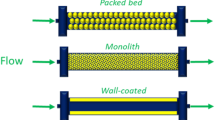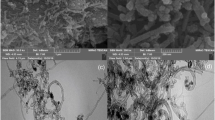Abstract
Organosulfur compounds are important moieties found in several medicinal drugs used in the therapy of arthritis, cancer, depression, diabetes or immune deficiency syndrome. Furthermore, organosulfur compounds are intermediates in many organic reactions with a key role as ligands or chiral auxiliaries. Due to their importance in various areas as pharmaceutical chemistry, synthetic organic chemistry, as well as materials science, the development of new and more sustainable synthetic protocols to provide access to different organosulfur compounds, has a high impact on the broader chemistry community. Many interesting transformations of organosulfur compounds involve an oxidation reaction to access to organosulfur derivatives such as disulfide, sulfinyl or sulfones. Organosulfur oxidation is typically carried out using different oxidant agents such as peroxides, peracids or using atmosphere oxygen under photocatalysis. Despite the numerous procedures reported in the academia, the developments of oxidation of organosulfur compounds with an industrial interest has been limited in regard to the scaling-up, sustainable and safer process. In this context, the use of continuous-flow technology has allowed overcome the disadvantaged of batch approach and is a bridge to connect the academia with the industry. The aim of this review is to highlight the importance of applying flow chemistry methodology as a greener and scalable process in the oxidation of organosulfur compounds. Additionally, a critical view of the different developed methodologies and a future view in the employ of organosulfur oxidation are discussed.


















Similar content being viewed by others
References
Rafiee E, Nobakht N (2015) Keggin type heteropoly acid, encapsulated in metal-organic framework: A heterogeneous and recyclable nanocatalyst for selective oxidation of sulfides and deep desulfurization of model fuels. J Mol Cat A Chem 398:17–25
Ilardi EA, Vitaku E, Njardarson JT (2014) Data-Mining for Sulfur and Fluorine: an evaluation of pharmaceuticals to reveal opportunities for drug design and discovery. J Med Chem 57:2832–2842
Viswanatharaju Ruddraraju K, Parsons ZD, Lewis CD, Gates KS (2017) Allylation and alkylation of biologically relevant nucleophiles by Diallyl sulfides. J Organomet Chem 82:776–780
Nohara T, Fujiwara Y, Ikeda T, Murakami K, Ono M, Nakano D, Kinjo J (2013) Cyclic Sulfoxides Garlicnins B2, B3, B4, C2, and C3 from Allium sativum. Chem Pharm Bull 61:695–699
Hartz RA et al (2006) Synthesis and evaluation of 2-anilino-3-phenylsulfonyl-6-methylpyridines as corticotropin-releasing factor1 receptor ligands. Bioorg Med Chem Lett 16:934–937
Jia T, Wang M, Liao J (2019) Chiral Sulfoxide ligands in asymmetric catalysis. Top Curr Chem 377:1–29
Trost BM, Rao M (2015) Development of chiral Sulfoxide ligands for asymmetric catalysis. Angew Chem Int Ed 54:5026–5043
Cantwell KE, Fanwick PE, Abu-Omar MM (2017) Mild, selective Sulfoxidation with molybdenum(VI) cis-Dioxo Catalysts. ACS Omega 2:1778–1785
Fareghi-Alamdari R, Zekri N, Moghadam AJ, Farsani MR (2017) Green oxidation of sulfides to sulfoxides and sulfones with H2O2 catalyzed by ionic liquid compounds based on Keplerate polyoxometalates. Catal Commun 98:71–75
Amini M, Najafpour MM, Salimi S, Ramezani S, Ashouri F, Mahmoudi G (2017) Iron oxide on carbon-based supports as efficient catalysts for organic compounds oxidation. App Organometal Chem 31:e3892
Mangaonkar SR, Kole PB, Singh FV (2018) Oxidation of Organosulfides to Organosulfones with Trifluoromethyl 3-Oxo-1λ3,2-benziodoxole-1(3H)-carboxylate as an oxidant. Synlett 29:199–202
Chao D, Zhao M (2017) Robust Cooperative Photo-oxidation of Sulfides without Sacrificial Reagent under Air Using a Dinuclear RuII–CuII Assembly. ChemSusChem 10:3358–3362
Fanelli F, Parisi G, Degennaro L, Luisi R (2017) Contribution of microreactor technology and flow chemistry to the development of green and sustainable synthesis Beilstein. J Organomet Chem 13:520–542
Gemoets HPL, Hessel V, Noël T (2016) In Liquid Phase Aerobic Oxidation Catalysis: Industrial Applications and Academic Perspectives, pp. 397–419
Gemoets HPL, Su Y, Shang M, Hessel V, Luque R, Noël T (2016) Liquid phase oxidation chemistry in continuous-flow microreactors. Chem Soc Rev 45:83–117
Hone CA, Kappe CO (2019) The use of molecular oxygen for liquid phase aerobic oxidations in continuous flow. Top Curr Chem 377:2
Maggi R, Chitsaz S, Loebbecke S, Piscopo CG, Sartoria G, Schwarzerb M (2011) Highly chemoselective metal-free oxidation of sulfides with diluted H2O2 in a continuous flow reactor. Green Chem 13:1121–1123
Silva F, Baker A, Stansall J, Michalska W, Yusubov MS, Graz M, Saunders R, Evans GJS, Wirth T, (2018) Selective oxidation of sulfides in flow chemistry. Eur J Org Chem. 2134-2137
Kulkarni AA, Nivangune NT, Joshi RR, Joshi RA (2013) Continuous flow multipoint dosing approach for selectivity engineering in sulfoxidation. Org Process Res Dev 17:1293–1299
Doherty S, Knight JG, Carroll MA, Ellison JR, Hobson SJ, Stevens S, Hardacre C, Goodrich P (2015) Efficient and selective hydrogen peroxidemediated oxidation of sulfides in batch and segmented and continuous flow using a peroxometalate-based polymer immobilised ionic liquid phase catalyst. Green Chem 17:1559–1571
Doherty S, Knight JG, Carroll MA, Clemmet AR, Ellison JR, Backhouse T, Holmesb N, Bourneb RA (2016) Efficient and selective oxidation of sulfides in batch and continuous flow using styrene-based polymer immobilised ionic liquid phase supported peroxotungstates. RSC Adv 6:73118–73131
Pye SJ, Dalgarno SJ, Chalker JM, Raston CL (2018) Organic oxidations promoted in vortex driven thin films under continuous flow. Green Chem 20:118–124
Bull JA, Degennaro L, Luisi R (2017) Straightforward strategies for the preparation of NH-Sulfoximines: a serendipitous story. Synlett 28:2525–2538
Degennaro L, Tota A, Angelis SD, Andresini M, Cardellicchio C, Capozzi MA, Romanazzi G, Luisi R, (2017) A convenient, mild, and green synthesis of NH-sulfoximines in flow reactors. Eur J Org Chem, 6486-6490
Laudadio G, Straathof NJW, Lanting MD, Knoops B, Hessel V, Noël T (2017) An environmentally benign and selective electrochemical oxidation of sulfides and thiols in a continuous-flow microreactor. Green Chem 19:4061–4066
Laudadio G, de Smet W, Struik L, Cao Y, Noël T (2018) Design and application of a modular and scalable electrochemical flow microreactor. J Flow Chem 8:157–165
Laudadio G, Barmpoutsis E, Schotten C, Struik L, Govaerts S, Browne DL, Noël T (2019) Sulfonamide Synthesis through Electrochemical Oxidative Coupling of Amines and Thiols. J Am Chem Soc 141:5664–5668
Laudadio G, Bartolomeu AA, Verwijlen LMHM, Cao Y, de Oliveira KT, Noël T (2019) Sulfonyl Fluoride Synthesis through Electrochemical Oxidative Coupling of Thiols and Potassium Fluoride. J Am Chem Soc 141:11832–11836
Gu X, Li X, Chai Y, Yang Q, Li P, Yao Y (2013) A simple metal-free catalytic sulfoxidation under visible light and air. Green Chem 15:357–361
Lebel H, Piras H, Borduy M (2016) Iron-catalyzed amination of sulfides and sulfoxides with azides in photochemical continuous flow synthesis. ACS Catal 6:1109–1112
Casado-Sánchez A, Gómez-Ballesteros R, Tato F, Soriano FJ, Pascual-Coca G, Cabrera S, Alemán J (2016) Pt(ii) coordination complexes as visible light photocatalysts for the oxidation of sulfides using batch and flow processes. Chem Commun 52:9137–9140
Bottecchia C, Erdmann N, Tijssen PMA, Milroy L-G, Brunsveld L, Hessel V, Noël T (2016) Batch and flow synthesis of disulfides by visible-light-induced TiO2 photocatalysis. ChemSusChem 9:1781–1785
Lang X, Chen X, Zhao J (2014) Heterogeneous visible light photocatalysis for selective organic transformations. Chem Soc Rev 43:473–486
Emmanuel N, Mendoza C, Winter M, Horn CR, Vizza A, Dreesen L, Heinrichs B, Monbaliu J-CM (2017) Scalable Photocatalytic oxidation of methionine under continuous-flow conditions. Org Process Res Dev 21:1435–1438
Schapp A, Thayer A, Blossey E, Neckers D (1975) Polymer-based sensitizers for photooxidations. II. J Am Chem Soc 97:3741–3745
Xu D, Neckers D (1987) Aggregation of rose bengal molecules in solution. J Photochem Photobiol A 40:361–370
Kong CJ, Fisher D, Desai BK, Yang Y, Ahmad S, Belecki K (2017) High throughput photo-oxidations in a packed bed reactor system. Bioorg Med Chem 25:6203–6208
Straathof NJW, Su Y, Hessel V, Noël T (2016) Accelerated gas-liquid visible light photoredox catalysis with continuous-flow photochemical microreactors. Nat Protoc 11:10–21
Cambié D, Dobbelaar J, Riente P, Vanderspikken J, Shen C, Seeberger PH, Gilmore K, Debije MG, Noël T (2019) Energy-efficient solar photochemistry with luminescent solar concentrator based Photomicroreactors. Angew Chem Int Ed 58:14374–14378
Britton J, Majumdar S, Weiss GA (2018) Continuous flow biocatalysis. Chem Soc Rev 47:5891–5918
Goundry WRF et al (2017) Development and scale-up of a biocatalytic process to form a chiral Sulfoxide. Org Process Res Dev 21:107–113
Acknowledgments
This work was supported in part by Consejo Nacional de Investigaciones Científicas y Técnicas (CONICET), Secretaría de Ciencia y Tecnología (SeCyT), Universidad Nacional de Córdoba (UNC) and Fondo para la Investigación Científica y Tecnológica Argentina (FONCyT). FP gratefully acknowledges receipt of a fellowship from CONICET.
Author information
Authors and Affiliations
Corresponding authors
Ethics declarations
Conflict of interest
The authors declare no conflict of interest.
Additional information
Publisher’s note
Springer Nature remains neutral with regard to jurisdictional claims in published maps and institutional affiliations.
Rights and permissions
About this article
Cite this article
Colomer, J.P., Traverssi, M. & Oksdath-Mansilla, G. Oxidation of organosulfur compounds promoted by continuous-flow chemistry. J Flow Chem 10, 123–138 (2020). https://doi.org/10.1007/s41981-019-00066-5
Received:
Accepted:
Published:
Issue Date:
DOI: https://doi.org/10.1007/s41981-019-00066-5




